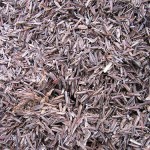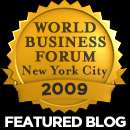Jul24
How to Out-Compete a Larger Company
Point: Use friction to your advantage
Story: McGuckin Hardware is a family-owned store in Boulder, Colorado, long known to any do-it-yourselfer as the place to go for supplies. The store has knowledgeable, friendly staff, many of whom have worked at the store for years over its 54-year history.
A few years ago, Home Depot opened a store in Boulder, with twice the space, offering lower prices. Can McGuckin’s survive against giant Home Depot? Or will it become another mom-&-pop store shuttered by behemoth retailers with economies of scale in supply chain and large marketing budgets?
According to recent research by Wharton’s Olivier Chatain INSEAD’s Peter Zemsky, McGuckins has a good shot at success due to a concept that Chatain and Zemsky call “friction.” As they define it, a friction is any force that makes it difficult for buyers and sellers to connect. For example, a poor location is a friction if it makes it harder for customers to get to the store. A complex website or a confusing store layout is a friction if it’s hard for customers to find the products they want to buy.
Smaller companies can out-compete giants by exploiting frictions. For example, McGuckin’s can use its loyal, knowledgeable staff to help customers quickly find what they need or give them sound advice if they’re embarking on a new project or product purchase. Long-time loyal employees are more likely to go the extra mile to help a customer. McGuckin’s loyal staff also know the local area, so they know which paints withstand Colorado’s intense sun and which garden plants thrive in the local climate. McGuckin’s local knowledge reduces its distance to its customers, which reduces friction.
Action:
- Document the time, costs, knowledge, hassles that customers face in finding your business, buying from you, or using your products
- Compare the frictions in your business or products with those of your competitors
- Adjust or redesign your business to minimize your friction
- Emphasize your low friction in your marketing and advertising
For more information:
Olivier Chatain and Peter Zemsky, Value Creation and Value Capture with Frictions
4 Comments »Case study, Growth, How-to, Opportunity, Strategy











